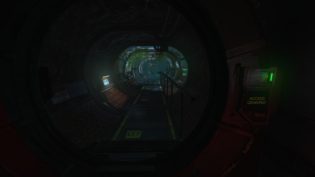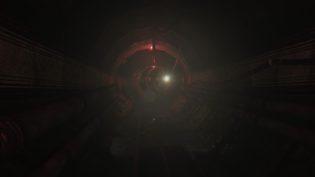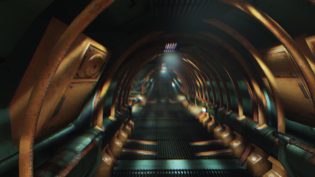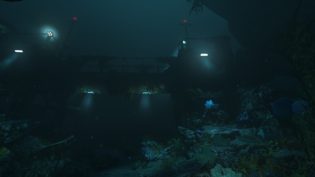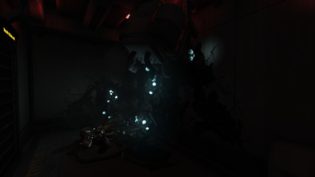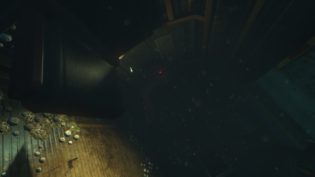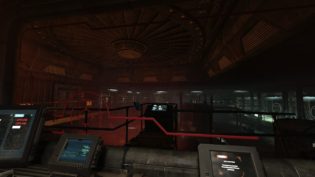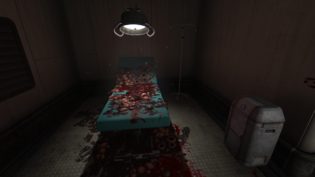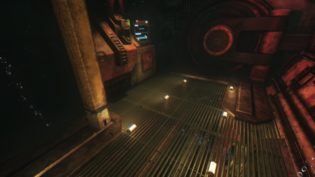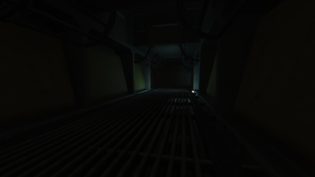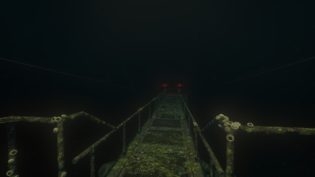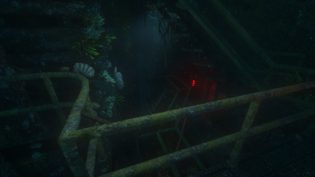Time is a curious thing. 2006, the Penumbra tech demo and a completely different me. Today it all feels so far away. So many changes, so many things to happen, choices to make, emotions to feel. It’s 5 years since Amnesia: The Dark Descent. 2 since A Machine for Pigs (even though it wasn’t made by Frictional). Two more versions of me. Would all these versions of myself and me today live together? Would we understand each other? How would that work? Are we defined by our consciousness or something more than that?
“Reality is that which, when you stop believing in it, doesn’t go away” – the game begins with the Philip K. Dick quote. After the Lovecraftian unknowable in their Amnesia: TDD, Frictional return to what they can do better – sci-fi that you can actually explain. They love to pose questions, but it seems like they cannot avoid answering them in their games as well, so this time, instead of leaving the players in the dark with something they can’t quite explain (something they’re not good at), they use their writing weakness as a strength. Which is why SOMA is a story about consciousness, about robots, about AI, about virtual reality and about what makes us human. And it’s a really good story.
To say more would spoil the game, which is something to avoid when talking about Frictional titles, so I’ll stop. What I can say is that, while it doesn’t really say anything enlightening or something that you might’ve never ever heard before and that while it lacks some of the drama and poetic writing of thechineseroom that elevated A Machine for Pigs, it’s still a really well told story. Frictional has been searching for narration tricks in their games for years and SOMA is a clear step in the right direction and a bit of a sidestep as well.
The sidestep, as you might expect, concerns the gameplay elements. In Black Plague the developers were careful about balancing the survival horror elements of the original title, while trying to tell an interesting linear tale. In The Dark Descent they paid less attention to the gameplay elements, but it was still a mechanically-driven game. SOMA makes everything much simpler. But in doing so, Frictional are free to create more interesting variety in each section of the game. And due to that, the game constantly feels fresh and inventive.
SOMA still has those hub-based locations where you explore different parts of the central map, but in the overall game structure they’re harder to notice. And the structure this time is very streamlined and linear in the best possible sense. Even the loading screens were eliminated this time (though the engine loads new sections of the map with a noticeable hitch and a change of lighting). The game still has an inventory button, but it’s almost pointless as you rarely have any items to carry and nothing gets combined or “used” in that menu. You’re still interacting with the world via mouse movements, yet by this point it feels quaint and unnecessary. And frankly inconvenient at times, as unlike Penumbra where it all started, you don’t really do any crazy physics-based actions. You can still pick up, rotate and throw some junk, but it’s pointless.
The game has a health system, but it basically has 3 states. Healthy, injured (by an enemy or some hazard) or dead (when you just reload the checkpoint). You can heal at certain spots in a way that was somewhat reminiscent of ObsCure 2. No sanity meter is present, though enemies affect your vision when nearby. Pretty violently too, if I’m honest, you might hate this effect. That said, it’s nice that this time around the enemies can actually notice you if you look at them.
The stealth horror elements are also still important, though it happens less often. Each stealth encounter is far more involved and complex, however, and every enemy type has its own unique way of finding you. Besides, unlike Amnesia, the enemies don’t just despawn if you idle (it seems), and stay on the map until you get around them. That said, I’ve seen some people hate the whole stealth horror element in this game. And I can kinda get why. It’s really well balanced in the starting parts of the game, but closer to the end it becomes a bit too tedious and you start wishing for those good story-driven sections again without any hide and seek sections.
All that said, the frustrating moments weren’t happening all that often for a game that took me around 10 hours to go through. It was really nice to play the game that tried to tell a good story and leave you with tough questions. A horror title that wasn’t jumpscaring you to death and instead took time to build a mood, to create the sense of dread. A sci-fi story that covered some topics that haven’t been often brought up in gaming. And an underwater adventure that was probably even more engaging with its setting than BioShock 2. Also, a game that didn’t overstay its welcome too much. And finally, it was really refreshing to see a small independent studio dealing with success in a nice way. Spending their money and time on something they wanted to do. Not just trying to recapture the success. But looking into the future.


